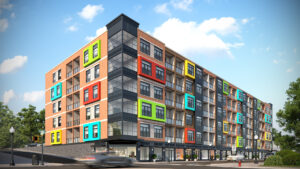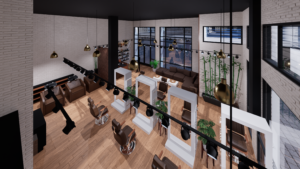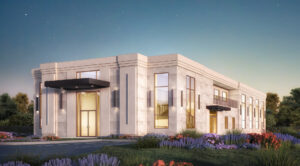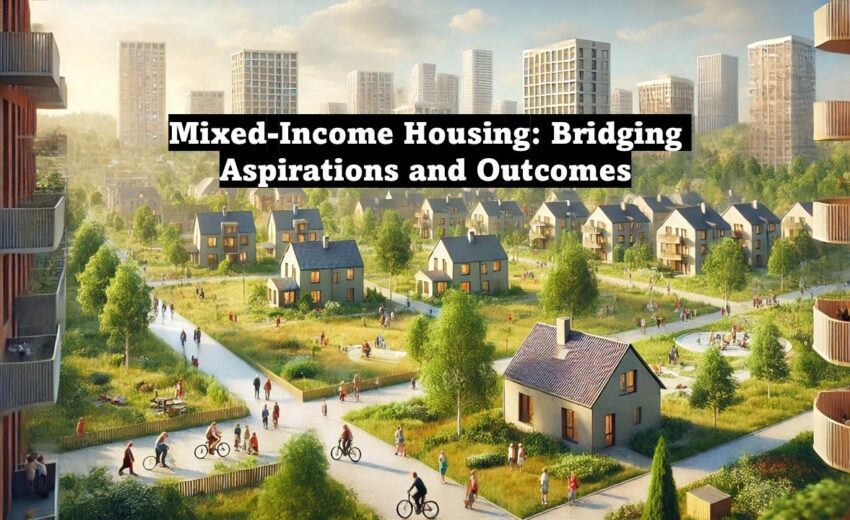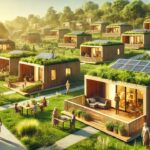Public housing has long been associated with concentrated poverty, rising crime, welfare dependency, and urban decay. To combat these challenges and spark neighborhood revitalization, the U.S. has increasingly turned to mixed-income housing as a potential solution. But does it deliver on its promise? The answer depends on perspective.
Decoding Mixed-Income Housing
While there is no universal definition, mixed-income housing is broadly understood as a deliberate effort to create multifamily neighborhoods that integrate residents across various income levels. These developments combine market-rate units for higher-income tenants with below-market-rate units for lower-income residents, calculated as percentages of the area median income (AMI). Unlike tenant-based subsidies such as Section 8 vouchers, these developments tie financial support to the housing units themselves.
Key features of mixed-income housing include
- Balancing household income levels within the community
- Strategically blending different income groups in shared spaces
- Offering diverse housing models, from rentals to ownership
- Being driven by collaborative public-private partnerships
The Vision Behind Mixed-Income Housing
Mixed-income housing aims to go beyond physical infrastructure, it strives to dismantle poverty’s cultural barriers, promote economic integration, and breathe new life into underserved urban areas.
Research highlights the challenges faced by residents in struggling neighborhoods, from limited educational and career opportunities to higher crime rates and poor health outcomes. By providing stable, high-quality housing, mixed-income developments seek to empower residents, offering pathways to upward mobility and financial independence.
These projects also aim to attract private investment and revitalize infrastructure in areas often overlooked by traditional development. By combining quality housing with strategic community-building, mixed-income neighborhoods aspire to create inclusive, thriving spaces that redefine urban living.
The effectiveness of mixed-income housing remains a topic of debate. However, its focus on integrating people and resources represents a bold attempt to address complex urban challenges with holistic, community-driven solutions.
Mixed-Income Housing: Bridging Ideals and Outcomes
Public housing policies have historically contributed to concentrated poverty, racial and economic divides, increased crime, and plummeting property values. As a response, mixed-income housing has been heralded as a more inclusive and effective alternative. While the concept aspires to mitigate negative neighborhood dynamics and foster positive change, the reality often tells a more complex story.
The success of mixed-income developments hinges on local contexts and the nuances of implementation. A 2013 Cityscape review by the U.S. Department of Housing and Urban Development revealed that while mixed-income housing can improve neighborhood conditions, its impact on fostering social cohesion or alleviating poverty remains limited.
Mixed-Income Housing: Promise or Perception?
Supporters of mixed-income housing point to its potential to create safer, more resourceful communities, but research suggests these outcomes are not guaranteed. Many of the perceived benefits, like reduced stress in safer neighborhoods, are intuitive rather than fully validated by data.
What is clear is that mixed-income housing offers opportunities to reimagine urban spaces, but its success requires more than just blending incomes. It demands thoughtful integration of social programs, infrastructure investment, and a deeper understanding of the systemic issues that housing alone cannot solve. Bridging the gap between aspiration and reality remains the challenge and opportunity of this evolving model.
Advantages of Living in Mixed-Income Communities
- Building Bridges Through Social Networks
Where you live shapes who you know. Mixed-income communities create opportunities for lower-income residents to connect with people outside their usual circles, expanding access to resources, job leads, and emotional support. These connections can strengthen social capital and open doors to new possibilities.
- Breaking the Cycle of Poverty
Diverse social networks can translate into better economic opportunities, paving the way for improved financial outcomes. By connecting residents to resources and mentorship, mixed-income housing offers a pathway to reducing poverty and fostering upward mobility.
- Influencing Positive Behaviors
Living alongside higher-income neighbors provides lower-income residents with exposure to diverse lifestyles, work habits, and community standards. This proximity can inspire shifts in cultural conduct, career ambition, and even approaches to homeownership.
- Elevating Everyday Living
Mixed-income developments often come with access to better schools, healthcare, and services that enhance quality of life. Safer streets, improved housing, and reduced stress can lead to healthier, happier residents. For children, these environments often foster stronger academic and economic outcomes in the long run.
- Empowering Civic Participation
Higher-income residents tend to be more active in local governance and advocacy. Their involvement can inspire others to engage in civic life, creating a ripple effect that strengthens community bonds and drives meaningful change.
- Celebrating Inclusion and Diversity
Blending different socioeconomic, cultural, and racial groups fosters greater tolerance and understanding. These interactions promote integration and create a living environment that thrives on diversity.
- Attracting Investment and Opportunity
The presence of higher-income residents can shift market dynamics, drawing in better services, amenities, and infrastructure. These improvements benefit the entire community, transforming under-resourced areas into vibrant hubs of activity.
- Cultivating Neighborhood Accountability
Higher-income residents often demand a stronger adherence to community rules and standards. This advocacy for order and accountability can result in safer, more organized neighborhoods that feel secure for all residents.


